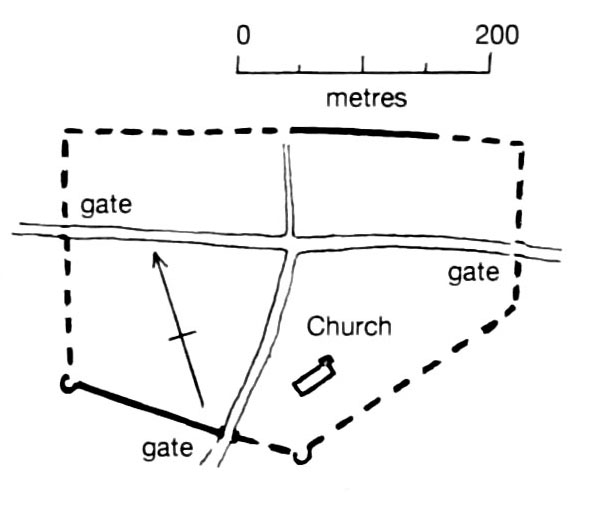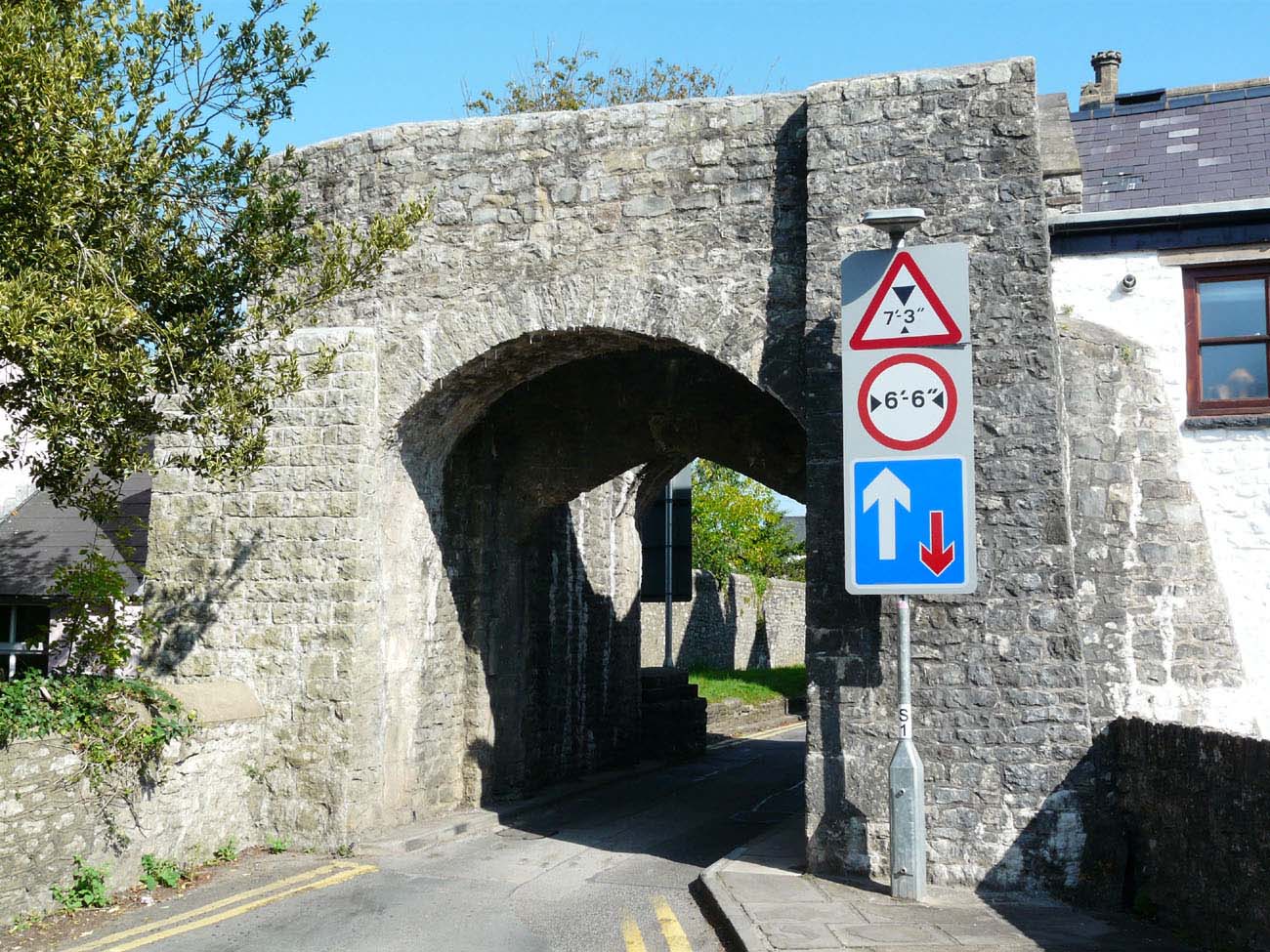History
The Cowbridge defense walls were erected at the beginning of the 14th century to protect the lordship of Glamorgan and facilitate the toll collection on market days twice a week. They protected a small town on the important route connecting Cardiff and Swansea. Their demolition began in the 18th century. In 1754, the western gate was pulled down, and the eastern gate about twenty years later.
Architecture
The defensive walls originally encircled in the shape of a pentagon, covering an area of about 33 acres. They were 7.7 meters high and were topped with battlement and a wide wall-walk for defenders. They were reinforced with an unknown number of towers, probably mostly semicircular, open from the town side and located in places where the walls bent. Probably they were not too high, at most they exceeded the crown of the defensive wall by one storey. The corner tower preserved to this day in the western part of the perimeter was given a semicircular shape with a polygonal superstructure.
Four gates led to the town: the northern, southern, western and eastern gates, while the northern one was rather a smaller postern leading to suburban pastures. The partially preserved southern gate was a passege set in a four-sided gatehouse with one or two rooms and two flanking towers containing stairs and additional rooms. The gate passage was 3.2 meters wide and about 6 meters long.
Current state
To this day, a large part of the southern part of the defensive circuit has been preserved, including a partially preserved southern gate and two towers. The surviving fragments of the wall are now much lower, reaching about 4 meters in height.
bibliography:
Salter M., Medieval walled towns, Malvern 2013.
Website gatehouse-gazetteer.info, Cowbridge Town Walls.


